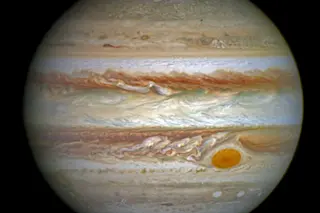Hubble captured stunning images of auroras in Jupiter's atmosphere. (Credit: NASA, ESA) Juno (JUpiter Near-polar Orbiter) is the sixth spacecraft to study Jupiter (give or take a few gravity assists), but will be the second to fall into orbit around the gas giant following the Galileo probe in 1995. It is part of NASA's New Frontiers space exploration program that specializes in researching the celestial bodies of the solar system. Juno was launched on August 5th, 2011 from Cape Canaveral Air Force Station in Florida and intended to be placed in a polar orbit around Jupiter to study the planet's composition, magnetic and gravity fields, and the polar magnetosphere. Even though Juno's scientific mission only lasts for a year, many more spacecraft are headed Jupiter's way.
An artist's rendition of the JUICE spacecraft. (Credit: ESA) The next upcoming Jupiter mission following Juno is the European Space Agency's (ESA) first large-class ...














